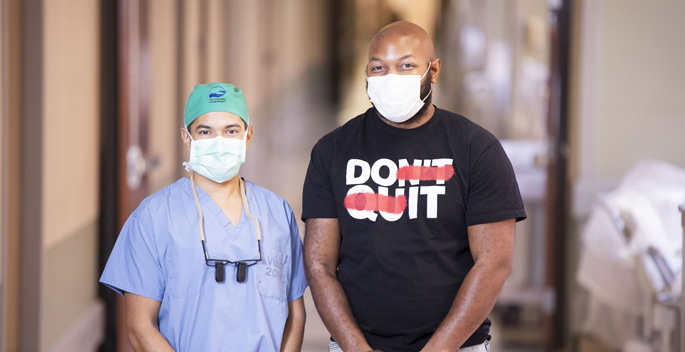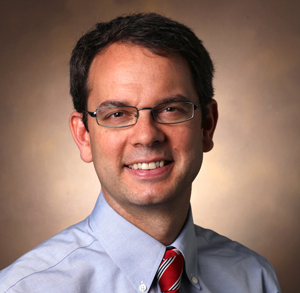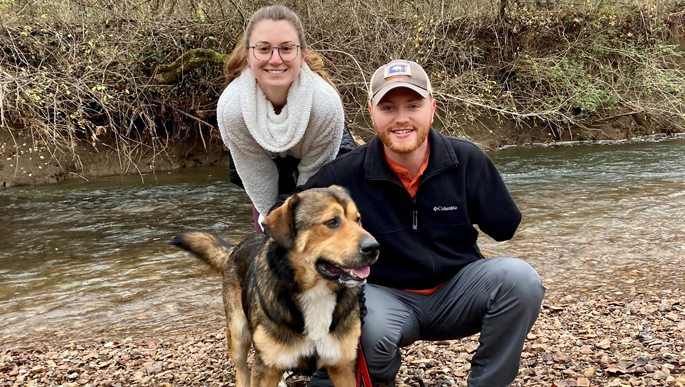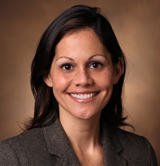
by Jill Clendening
Delvonte Mayberry was riding his motorcycle in his hometown of Clarksville, Tennessee, when a motorist pulled in front of him, sending him flipping over the vehicle. Mayberry was airlifted in critical condition to Vanderbilt University Medical Center via LifeFlight.
Severe knee injuries required immediate reconstructive surgery, but it was a brachial plexus injury (BPI) on Mayberry’s right side that threatened to dramatically alter his life forever.
“I couldn’t move my right arm at all,” Mayberry said. “It was just there; just hanging.”
As a 22-year-old with plans to enlist in the Army and serve as a military police officer followed by a career as a civilian police officer, losing use of an arm was not in his plan.
The brachial plexus is a complex network of nerves that carries movement and sensory signals from the spinal cord to the arms and hands. A BPI happens when these nerves are stretched, compressed, or in the most serious cases like Mayberry’s, completely separated from the spine.
BPIs occur from birth on, as larger babies in difficult vaginal deliveries are prone to this injury, and it’s estimated that the nerve injury occurs in one to two births per 1,000 in the United States. At the Pediatric Brachial Plexus and Nerve Clinic at Monroe Carell Children’s Hospital at Vanderbilt, multidisciplinary care is provided for pediatric cases.
Minor injuries are often treated with therapy, with progress monitored closely for several months as nerves heal. For more severe injuries, surgery can be done to try to restore function.
When a BPI happens in adults, it is most often caused by blunt force trauma, such as a motor vehicle accident or a penetrating injury like a gunshot. Tumors or damage from radiation treatment can also cause BPIs.
While these injuries are rare — VUMC surgeons operate on 15-20 adults with BPIs annually — delaying or not receiving appropriate care can result in permanent loss of hand and arm movement.
“A patient will often complain of arm weakness, and they may lose the ability to move their shoulder, elbow, or even hand, as well as lose sensation in the arm,” said Mihir Desai, MD, associate professor in the Department of Orthopaedic Surgery and medical director of VUMC’s Adult Brachial Plexus Clinic. “It can be across a whole spectrum where you have injuries that only lead to loss of function of the shoulder and elbow, or you might have someone with what’s called a ‘flail arm,’ where the entire arm is non-functional.”
Desai and other VUMC surgeons specializing in this injury often first meet patients with suspected BPIs in the Emergency Department or Trauma Intensive Care Unit of Vanderbilt University Adult Hospital.
Now, the Adult Brachial Plexus Clinic is open at Vanderbilt Health Belle Meade, at 6002 Highway 100 in Nashville near the Highway 70 and Highway 100 split. Patients diagnosed with a BPI or who are suspected to have this injury are seen on the fourth Friday of each month and provided multidisciplinary care, with specialists in plastic surgery, orthopaedic surgery and occupational therapy on site.
To diagnose a BPI, in addition to a physical exam, an MRI and electromyography (EMG) or nerve studies are used to assess the muscles and their related nerves. Minor injuries can first be addressed with physical and occupational therapy and may recover with observation alone.
When BPIs require surgery, having a multispecialty team approach at the Adult Brachial Plexus Clinic is invaluable, said Desai.
He is joined at the clinic by Brinkley Sandvall, MD, assistant professor in the Department of Plastic Surgery, and Jed Maslow, MD, assistant professor in the Department of Orthopaedic Surgery.
“There’s a golden window of time for trying to reconstruct someone who has a brachial plexus injury because once a muscle is denervated (when connection is lost between a muscle and the nerve that controls it), you have 16 to 18 months before that muscle will be permanently denervated. Nerves heal at a rate of about an inch a month, and if someone has a BPI, these nerve connections may not reach the muscle before that muscle starts to die. That’s why these patients must be seen by specialists soon after injury, so they have the best chance at recovery.”
Because of its specialists with the knowledge and technology to perform complex, reconstructive surgery, VUMC is a regional leader in treating BPIs. The repair often requires microsurgery to relocate healthy, donor nerves from unaffected areas to connect to injured nerves. Surgeries can last from a few hours to as long as 10-12 hours, depending on the complexity.
In Mayberry’s case, following surgery he had weekly occupational therapy at VUMC. His nerves began healing, and strength and movement steadily returned to his arm. A year after surgery, he surprised Desai by dropping to the ground during an exam and knocking out push-ups as he smiled widely.
Now more than two years after surgery, Mayberry has a revised life script. He’s already passed an agility test and next he’ll tackle a written exam to become a police officer.
“I just really want to go for it and help people,” he said. “I really do appreciate everything Dr. Desai’s done for me. It means everything.”















